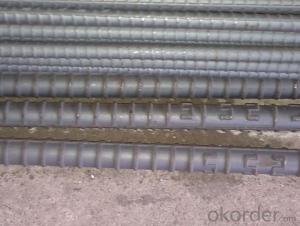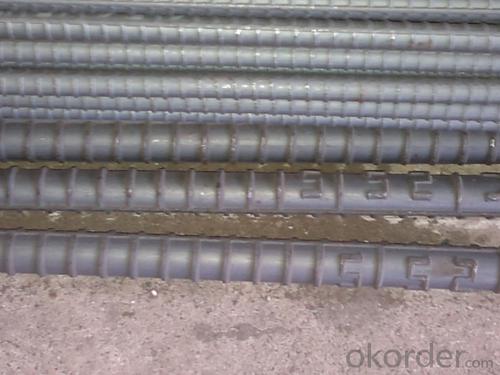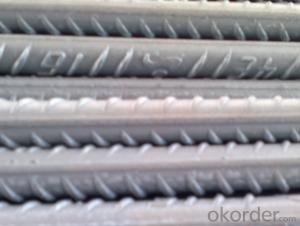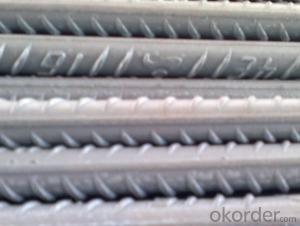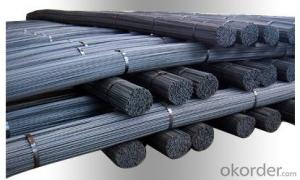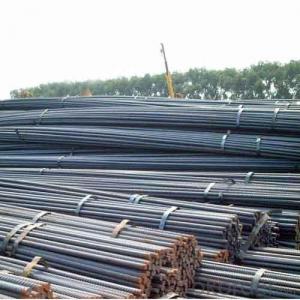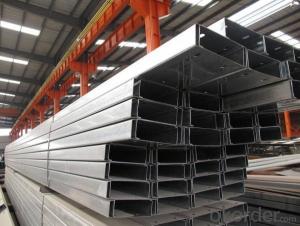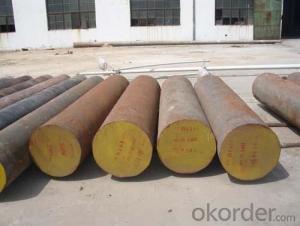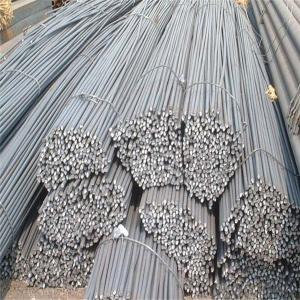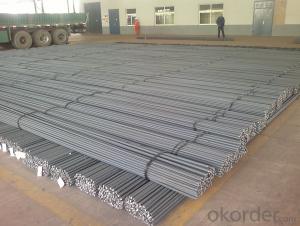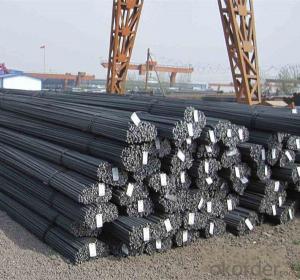Hot Rolled Steel High Qulity D-BAR Deformed Bar Made In China
- Loading Port:
- Tianjin
- Payment Terms:
- TT OR LC
- Min Order Qty:
- 500 m.t.
- Supply Capability:
- 40000 m.t./month
OKorder Service Pledge
OKorder Financial Service
You Might Also Like
Specification
Product Description:
OKorder is offering Hot Rolled Steel High Qulity D-BAR Deformed Bar Made In China at great prices with worldwide shipping. Our supplier is a world-class manufacturer of steel, with our products utilized the world over. OKorder annually supplies products to European, North American and Asian markets. We provide quotations within 24 hours of receiving an inquiry and guarantee competitive prices.
Product Applications:
Hot Rolled Steel High Qulity D-BAR Deformed Bar Made In China are ideal for structural applications and are widely used in the construction of buildings and bridges, and the manufacturing, petrochemical, and transportation industries.
Product Advantages:
OKorder's Hot Rolled Steel High Qulity D-BAR Deformed Bar Made In China are durable, strong, and resist corrosion.
Main Product Features:
· Premium quality
· Prompt delivery & seaworthy packing (30 days after receiving deposit)
· Corrosion resistance
· Can be recycled and reused
· Mill test certification
· Professional Service
· Competitive pricing
Product Specifications:
1, Diameter: 5.5mm-10mm ASTM Standard Reinforced Steel D Bar
10m- 40mm ASTM Standard Reinforced Steel D Bar
2, Length: 6m, 9m, 12m or customized
3, Standard: GB, ASTM, AISI, SAE, DIN, JIS, EN
OEM technology - send detailed technical parameters for accurate quotation.
2, Produce Process: smelt iron - EAF smelt billet - ESR smelt billet -
hot rolled or forged to get the steel round bar and plate
3, Heat Treatment: annealing, normalizing, tempering, quenching
4, Surface Treatment: Black
5, Quality Assurance: We accept third party inspection for all orders.
FAQ:
Q1: Why buy Materials & Equipment from OKorder.com?
A1: All products offered byOKorder.com are carefully selected from China's most reliable manufacturing enterprises. Through its ISO certifications, OKorder.com adheres to the highest standards and a commitment to supply chain safety and customer satisfaction.
Q2: How do we guarantee the quality of our products?
A2: We have established an advanced quality management system which conducts strict quality tests at every step, from raw materials to the final product. At the same time, we provide extensive follow-up service assurances as required.
Q3: How soon can we receive the product after purchase?
A3: Within three days of placing an order, we will begin production. The specific shipping date is dependent upon international and government factors, but is typically 7 to 10 workdays.
Q4: What makes stainless steel stainless?
A4: Stainless steel must contain at least 10.5 % chromium. It is this element that reacts with the oxygen in the air to form a complex chrome-oxide surface layer that is invisible but strong enough to prevent further oxygen from "staining" (rusting) the surface. Higher levels of chromium and the addition of other alloying elements such as nickel and molybdenum enhance this surface layer and improve the corrosion resistance of the stainless material.
Q5: Can stainless steel rust?
A5: Stainless does not "rust" as you think of regular steel rusting with a red oxide on the surface that flakes off. If you see red rust it is probably due to some iron particles that have contaminated the surface of the stainless steel and it is these iron particles that are rusting. Look at the source of the rusting and see if you can remove it from the surface.
Images:
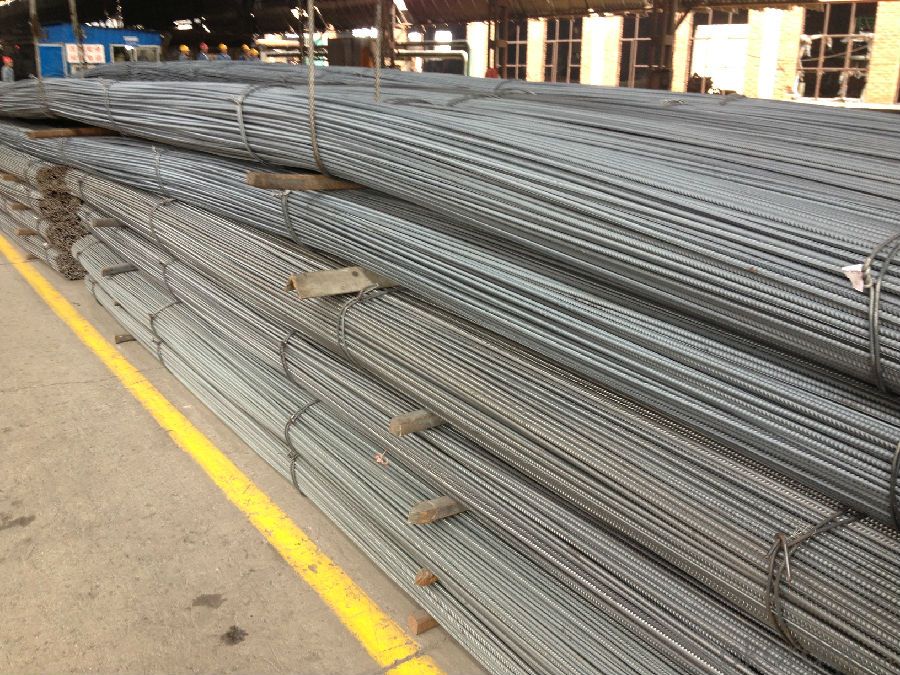
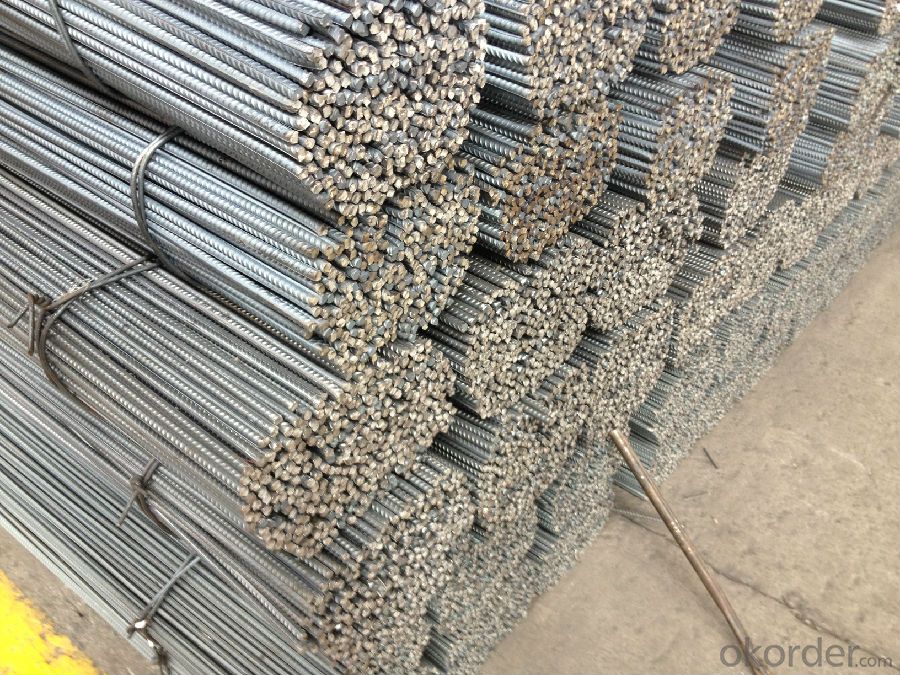
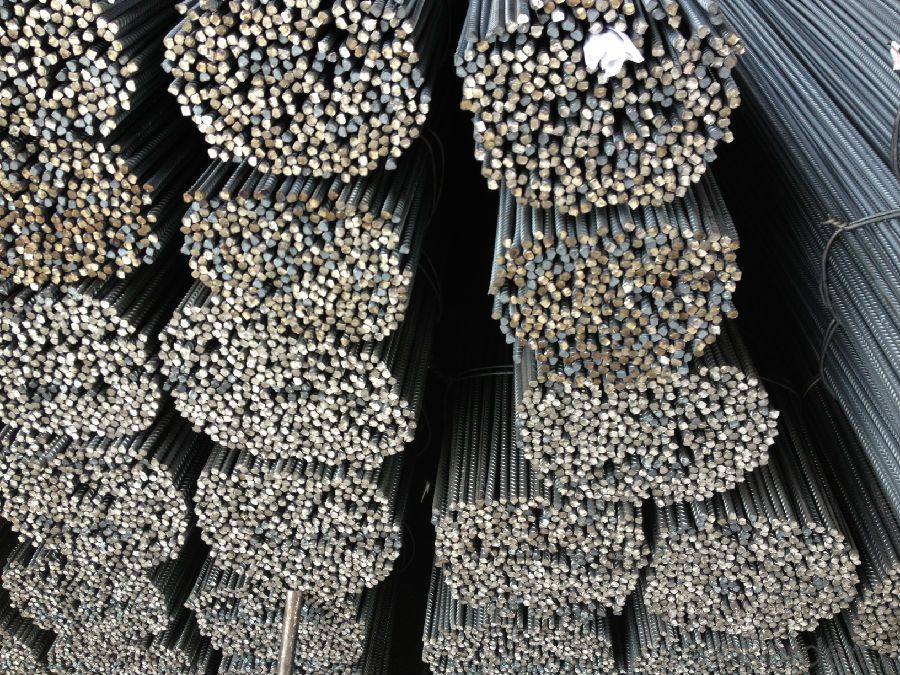
- Q: How are steel rebars protected from moisture during storage?
- Steel rebars are protected from moisture during storage by applying a protective coating, such as anti-corrosion paint or epoxy, or by covering them with waterproof materials like plastic sheets or tarps. Additionally, storing rebars in a dry and well-ventilated area can help prevent moisture buildup.
- Q: Are steel rebars suitable for use in sports stadium construction?
- Yes, steel rebars are suitable for use in sports stadium construction. Steel rebars, which are short for reinforcing bars, are commonly used in construction projects, including the building of sports stadiums. They provide enhanced strength and durability to the concrete structures by reinforcing them against tension forces. The use of steel rebars ensures that the stadium can withstand heavy loads, vibrations, and other external forces that may occur during sporting events or in case of natural disasters. Moreover, steel rebars are resistant to corrosion, which is crucial in maintaining the structural integrity of the stadium over time. Therefore, steel rebars are a reliable and suitable choice for use in sports stadium construction.
- Q: Can steel rebars be used in the construction of swimming pools?
- Yes, steel rebars can be used in the construction of swimming pools. Steel rebars provide reinforcement and strength to the concrete used in swimming pool construction, ensuring its durability and longevity.
- Q: What are the factors to consider while designing a reinforced concrete structure with steel rebars?
- Designing a reinforced concrete structure with steel rebars requires careful consideration of various factors to ensure its strength, durability, and safety. Here are some key factors to consider: 1. Structural Requirements: The first step is to determine the specific purpose of the structure and its load-bearing capacity. This includes considering the intended use, maximum load, and any potential dynamic loads such as wind or earthquakes. 2. Material Selection: Choosing the right type and grade of concrete and steel rebars is crucial. The concrete mix should have adequate strength, workability, and durability to withstand the anticipated conditions. Similarly, the rebars should have sufficient yield strength and corrosion resistance to maintain structural integrity over time. 3. Reinforcement Layout: The design should include an appropriate layout and spacing of rebars to distribute the load uniformly and prevent cracking or structural failure. This involves determining the rebar size, quantity, and arrangement based on the calculated forces and bending moments. 4. Concrete Cover: The concrete cover refers to the thickness of concrete surrounding the rebars. It is crucial to provide adequate cover to protect the rebars from corrosion, fire, and other environmental factors. The cover thickness should be determined based on the exposure conditions and the required durability. 5. Bonding between Concrete and Rebars: Proper bonding between the concrete and rebars is essential for transferring forces effectively. The design should consider factors such as mechanical interlocking, chemical adhesion, and surface treatment to ensure a strong bond and prevent slippage or separation. 6. Construction Considerations: The design should account for practical construction aspects such as formwork, placement, and compaction of concrete. It should also incorporate appropriate detailing for construction joints, lap splices, and anchorage of rebars to ensure proper installation and ease of construction. 7. Serviceability and Durability: The design should address serviceability requirements such as deflection limits, cracking control, and long-term performance. Additionally, it should consider factors that impact durability, such as exposure to moisture, chemicals, temperature variations, and potential for corrosion. 8. Quality Control and Inspection: Quality control measures, including testing of materials, monitoring during construction, and inspection of completed work, are crucial to ensure that the design requirements are met. Regular inspections and adherence to construction standards and codes are essential for the overall integrity and safety of the structure. By considering these factors and following appropriate design codes and standards, a reinforced concrete structure with steel rebars can be designed to provide the desired strength, durability, and safety throughout its lifespan.
- Q: What are the guidelines for proper spacing and arrangement of steel rebars in concrete structures?
- The guidelines for proper spacing and arrangement of steel rebars in concrete structures typically include requirements for minimum clear spacing between rebars, minimum concrete cover over the rebars, and maximum spacing between adjacent rebars. These guidelines are designed to ensure adequate reinforcement within the concrete, promote structural integrity, and prevent corrosion of the rebars.
- Q: What are the different types of supports used for steel rebars in formwork?
- There are several types of supports used for steel rebars in formwork, including chairs, spacers, and continuous supports. Chairs are small plastic or metal devices that are placed under the rebars to elevate them above the formwork surface. Spacers are similar to chairs but are used to maintain the correct spacing between rebars. Continuous supports, such as beams or blocks, are used to provide continuous support along the length of the rebars to prevent sagging or bending.
- Q: What is the process of calculating the required quantity of steel rebars for a project?
- The process of calculating the required quantity of steel rebars for a project involves several steps. First, the engineer or designer identifies the structural elements that require reinforcement, such as beams, columns, or slabs. Next, they determine the design requirements, including the desired strength, size, and spacing of the rebars. This is typically done by referring to the project's structural drawings, codes, and specifications. Once the design requirements are known, the engineer uses mathematical formulas and calculations to determine the quantity of rebars needed. These calculations consider factors such as the dimensions of the structural elements, the load-bearing capacity required, and the specific steel reinforcement design. The engineer then takes into account any additional factors that may affect the quantity of rebars required, such as laps, overlaps, and wastage. They may also consider the practicality and availability of standard bar lengths to minimize cutting and wastage. Finally, the engineer prepares a detailed bill of quantities, which specifies the quantity, size, and type of rebars required for each structural element. This information is crucial for procurement and construction purposes, ensuring that the right amount of steel reinforcement is available for the project.
- Q: Can steel rebars be welded to other steel components?
- Yes, steel rebars can be welded to other steel components. Welding is a common method used to connect steel rebars to various steel structures or components in construction projects. The process involves heating the rebars and the steel components to a high temperature, melting them, and then allowing them to cool and solidify, creating a strong and durable bond. Welding steel rebars to other steel components is a widely accepted practice that helps to enhance the overall structural integrity and stability of the construction. It provides a reliable connection between the rebars and the steel components, ensuring that they work together effectively to withstand the forces and loads placed on them. However, it is important to follow proper welding techniques and adhere to relevant industry standards and guidelines to ensure a successful and safe welding process.
- Q: What are the different corrosion protection methods for steel rebars?
- There are several corrosion protection methods for steel rebars, including epoxy coating, galvanization, concrete cover, and cathodic protection. Epoxy coating involves applying a layer of epoxy paint on the rebar surface to prevent direct contact with corrosive agents. Galvanization is the process of coating the rebar with a layer of zinc, which acts as a sacrificial anode and protects the steel from corrosion. Concrete cover refers to the thickness of concrete surrounding the rebar, acting as a physical barrier against corrosive elements. Cathodic protection involves the use of a sacrificial anode or an impressed current system to create an electric field that prevents the corrosion of steel rebars.
- Q: What are the different grades of steel rebars?
- The different grades of steel rebars include grade 40, grade 60, grade 75, and grade 80.
Send your message to us
Hot Rolled Steel High Qulity D-BAR Deformed Bar Made In China
- Loading Port:
- Tianjin
- Payment Terms:
- TT OR LC
- Min Order Qty:
- 500 m.t.
- Supply Capability:
- 40000 m.t./month
OKorder Service Pledge
OKorder Financial Service
Similar products
Hot products
Hot Searches
Related keywords
